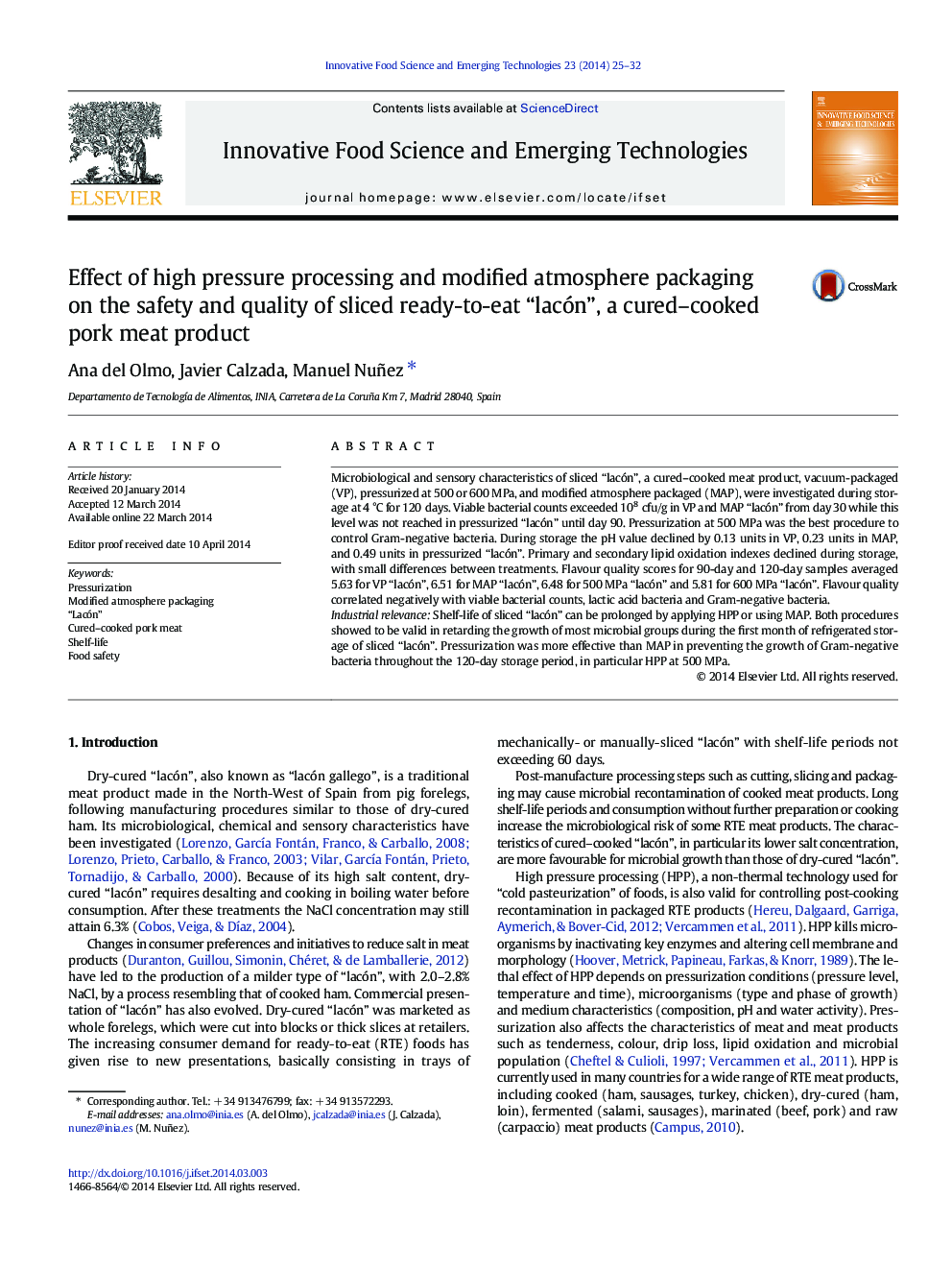| Article ID | Journal | Published Year | Pages | File Type |
|---|---|---|---|---|
| 2086539 | Innovative Food Science & Emerging Technologies | 2014 | 8 Pages |
•Vacuum-packaged “lacón” had viable bacterial counts above 8 log cfu/g on day 21.•Pressurized “lacón” showed viable bacterial counts below 6 log cfu/g on day 21.•Modified atmosphere packaging (MAP) did not reduce “lacón” microbial population.•Pressurization at 500 MPa was the best procedure to control Gram-negative bacteria.•Flavour quality scores of MAP and 500 MPa “lacón” remained stable for 120 days.
Microbiological and sensory characteristics of sliced “lacón”, a cured–cooked meat product, vacuum-packaged (VP), pressurized at 500 or 600 MPa, and modified atmosphere packaged (MAP), were investigated during storage at 4 °C for 120 days. Viable bacterial counts exceeded 108 cfu/g in VP and MAP “lacón” from day 30 while this level was not reached in pressurized “lacón” until day 90. Pressurization at 500 MPa was the best procedure to control Gram-negative bacteria. During storage the pH value declined by 0.13 units in VP, 0.23 units in MAP, and 0.49 units in pressurized “lacón”. Primary and secondary lipid oxidation indexes declined during storage, with small differences between treatments. Flavour quality scores for 90-day and 120-day samples averaged 5.63 for VP “lacón”, 6.51 for MAP “lacón”, 6.48 for 500 MPa “lacón” and 5.81 for 600 MPa “lacón”. Flavour quality correlated negatively with viable bacterial counts, lactic acid bacteria and Gram-negative bacteria.Industrial relevanceShelf-life of sliced “lacón” can be prolonged by applying HPP or using MAP. Both procedures showed to be valid in retarding the growth of most microbial groups during the first month of refrigerated storage of sliced “lacón”. Pressurization was more effective than MAP in preventing the growth of Gram-negative bacteria throughout the 120-day storage period, in particular HPP at 500 MPa.
